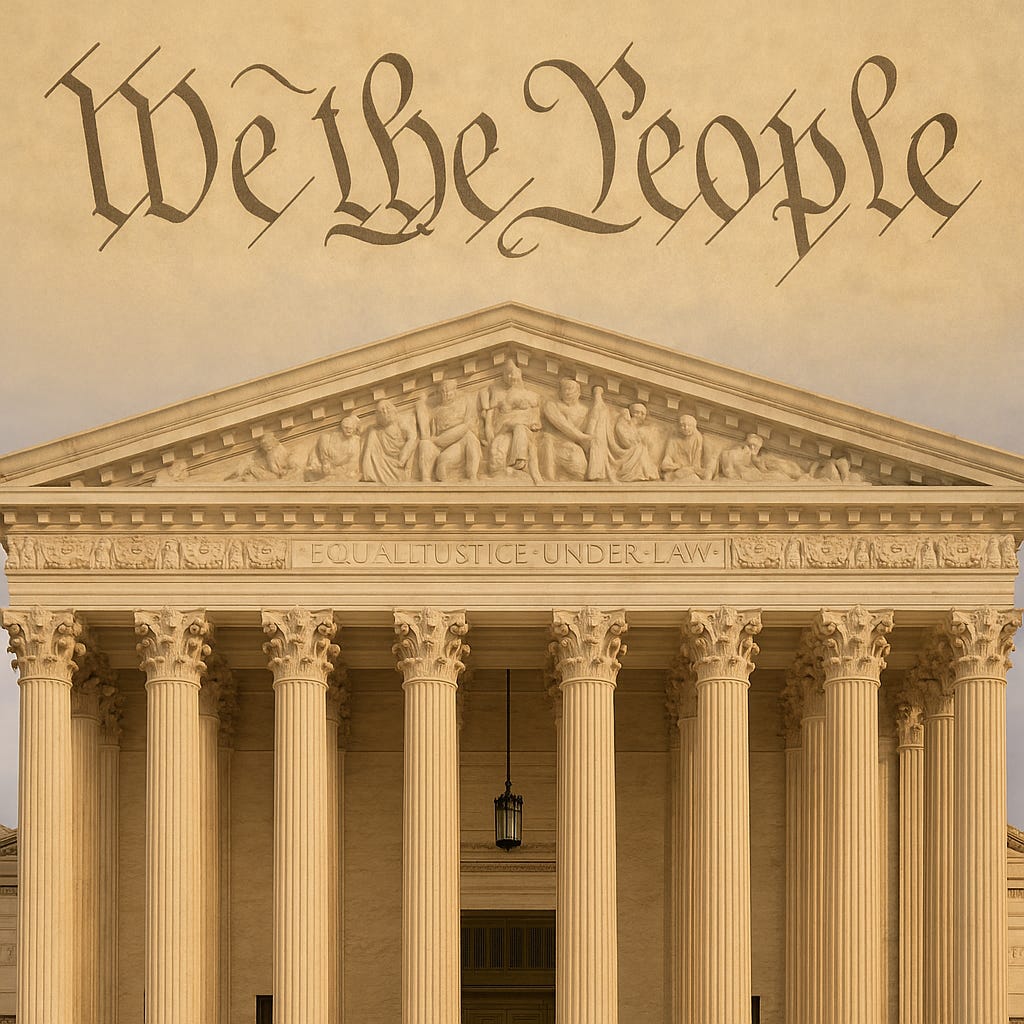🏛️ The U.S. Constitution & the Judicial Branch
Key resources to understand our nation’s founding principles and how courts interpret and apply them
‘A government of laws, not of men’ — a founding principle expressed by John Adams, 1780
These foundational documents and the institutions that interpret them still shape every debate about freedom, justice, and the role of government today. Understanding them is the first step to holding power accountable—and ensuring it serves the people.
America's Founding Documents
The Constitution of the United States—National Archives
The definitive source for the U.S. Constitution, hosted by the National Archives. Includes a high-resolution image and full transcription, beginning with the iconic Preamble—a statement of purpose for the U.S. government:
We the People of the United States, in Order to form a more perfect Union, establish Justice, insure domestic Tranquility, provide for the common defence, promote the general Welfare, and secure the Blessings of Liberty to ourselves and our Posterity, do ordain and establish this Constitution for the United States of America.
This page also links to other founding documents and amendments:
The Bill of Rights. The first 10 amendments protecting individual liberties
Amendments 11-27. Later constitutional changes expanding rights,
clarifying government powers, and addressing key historical events
The Declaration of Independence. The original call for liberty and equality
Also available on this site: the Articles of Confederation, Federalist Papers, and more.
The Constitution in Plain Language
A reader-friendly explanation of the Constitution’s articles and amendments, written in clear, everyday language. Ideal for those who want to understand without legal jargon.
Also worth exploring:
Constitution Annotated, Congress.gov — Analysis and interpretation of the U.S. Constitution
Interactive Constitution, National Constitution Center — Featuring scholarly insights from diverse legal experts
The Annenberg Guide to the U.S. Constitution
This interactive guide presents the full text of the Constitution alongside plain language explanations of each article and amendment. While designed for students, it's one of the most accessible tools available for readers of any age.
A clear, reliable way to understand what the Constitution says—and what it means.
Supreme Court of the United States — Official Website
The official source for decisions, opinions, court calendars, and rules of the highest court in the land. Though formal in tone, the site includes:
Searchable opinions and decisions
Oral argument schedules and audio
Justices’ biographies and court history
A reliable way to track constitutional interpretations and rulings that shape national law.
U.S. Constitution, Article III
“Section. 1. The judicial Power of the United States, shall be vested in one supreme Court, and in such inferior Courts as the Congress may from time to time ordain and establish. The Judges, both of the supreme and inferior Courts, shall hold their Offices during good Behaviour ….”
Understanding the Courts — Federal and State Judicial Systems
Structure of the Federal Courts – U.S. Courts
This official site explains how the federal court system works—from district courts to the Supreme Court. It’s a solid overview and includes simple charts and links to educational materials.
Structure of the State Courts
State courts, meanwhile, handle the vast majority of legal cases in the U.S., but their structures vary from state to state. Unfortunately, there’s no single website that clearly explains all 50 systems.
Best advice—Visit your state’s official court website:
Or search online: “[Your State] court system” or “court structure chart”
These sites may not be fancy, but they’re usually the most accurate source for how your state judiciary is organized and how to find local courts and case types.
Other Resources
Executive Overreach & Abuse of Power
A ranked guide to organizations resisting authoritarianism and defending democratic
Justice Reform & Legal Accountability
A ranked guide to advocacy groups promoting independent, ethical courts.
A ranked guide to legal groups challenging anti-democratic policies and abuses of power.
Bill of Rights: Due Process, Equal Protection, Habeas Corpus
A ranked guide to advocacy groups defending core constitutional protections
Freedoms of Speech, Press & Assembly
A ranked guide to organizations safeguarding free expression and civic participation.
Share
If you find this resource helpful, please share it with friends.
Subscribe
Get new posts from Plainly, Garbl delivered to your inbox.


